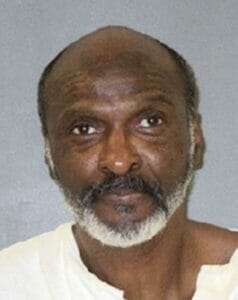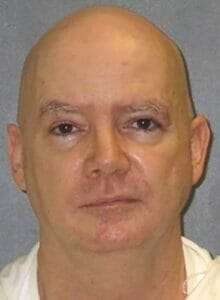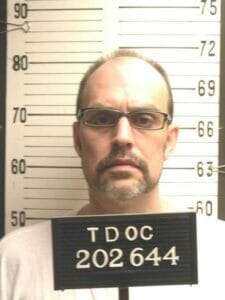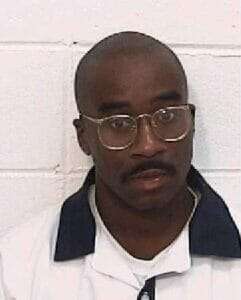Ray Cromartie was executed by the State of Georgia for the murder of a store clerk in 1994. According to court documents Ray Cromartie would murder store clerk Richard Slysz during a robbery. Richard Slysz would be executed by lethal injection on November 13, 2019
Ray Cromartie More News
Ray “Jeff” Cromartie is dead, executed at 10:59 p.m. eastern for the 1994 murder of South Georgia convenience store clerk Richard Slysz.
Cromartie’s death by lethal injection became imminent once the U.S. Supreme Court denied his request for a stay of execution shortly after 10 p.m. Cromartie appealed to the Supreme Court Wednesday evening after the federal appeals court in Atlanta rejected his request for a stay late Wednesday afternoon.
The 52-year-old was set to receive a lethal injection of pentobarbitol at 7 p.m. But while Georgia schedules executions for that hour, the state does not proceed until all courts have weighed in, which puts the actual time of death well into the night.
Ray Cromartie died amid uncertainty and contention.
He has always insisted he was not the person who pulled the trigger in the 1994 South Georgia convenience store robbery and murder that sent him to death row.
Two days before Cromartie’s scheduled execution, one of his co-defendants, Thad Lucas, released an affidavit saying he’d overheard their other co-defendant, Corey Clark, confess to being the shooter.
Lucas, who was the getaway driver in the robbery in Thomasville, did not mention Clark’s alleged confession at trial or in a recent interview. Lucas said in the affidavit that he originally didn’t think telling the truth would do any good. State officials argued his statement changes nothing, because Lucas acknowledges he didn’t see the shooting and, thus, can’t know who killed 50-year-old Richard Slysz.
And the 11th U.S. Circuit Court of Appeals, in its ruling rejecting Cromartie’s request for a stay, disagreed with Cromartie’s lawyers’ contention that Lucas’ recent statement shows their client is innocent of malice murder and his case should be reopened.
A three-judge panel of the 11th Circuit noted that just three days before Slysz was fatally shot in the head, Ray Cromartie committed an almost identical crime against another store clerk in the same town.
There was also testimony at trial that Cromartie picked out which store to rob in the Slysz killing. Given this, the court said, Cromartie has failed to present new evidence that’s so strong that reviewing judges cannot have confidence in the outcome of the trial.
In a concurring opinion, Judge Beverly Martin said that, under the law, Ray Cromartie “has no procedures available to allow us to consider the claims he raises here.”
This includes claims by Cromartie’s new lawyers that the jury should have heard mitigating evidence about their client’s troubled past. This is evidence that may have affected jurors’ views on Cromartie’s moral culpability for the crime that sent him to death row, Martin said.
“Certainly Mr. Cromartie, as well as our criminal justice system, would have been better served if his claims had been considered on the merits,” she wrote.
Slysz’s daughter, Elizabeth Legette, also didn’t see the shooting, which is one reason why she joined in Cromartie’s requests for new DNA testing. Cromartie’s attorneys say the testing — on shell casings and clothing — could prove it was Clark who shot the clerk, not Ray Cromartie.
At trial, Clark testified that Ray Cromartie fired the gun, and lawyers from the Georgia Attorney General’s Office say other witness testimony fits the pattern in Clark’s statements, not Cromartie’s.
Courts have one by one denied Cromartie’s DNA testing request in recent weeks, upsetting the victim’s daughter.
“In the course of the past few months, I have not been treated with fairness, dignity, or respect, and people in power have refused to listen to what I had to say,” Legette wrote in a statement released Tuesday. “I believe this was, in part, because I was not saying what I was expected to say as a victim.”
After 25 years of failed court fights, Ray Cromartie seemed resigned in recent visits with family.
Stepbrother Eric Major talked to him through a metal screen at the Georgia Diagnostic and Classification Prison outside Jackson, which houses the execution chamber.”
He was comforting us,” Major told The Atlanta Journal-Constitution. “He was never a very emotional person, but he was always a caring person.”
Major didn’t need to square the image of the convicted murderer as a caring person, because he never believed his stepbrother was guilty.
The brothers grew up mostly around Houston, where they had little supervision at home. “We kind of were raising ourselves,” Major said.
Ray Cromartie seemed to Major like an average-enough kid with a job at McDonald’s and a love for music. Cromartie wanted to be like their neighbor, an engineer, but Major doesn’t think it was so much the profession Cromartie wanted to emulate, just the act of wearing a suit to work.
The stepbrothers got into trouble here and there before Major’s mother brought him to live with her in Alabama.
At the mother’s urging, Major went to college.
Cromartie, meanwhile, joined the Army and got kicked out for reasons he never disclosed to Major. Cromartie ended up in Thomasville, his mom’s hometown near the Florida border, and Major stayed in Alabama, where he would later become a state representative.
Cromartie didn’t deny involvement in the robbery attempt at Junior Food Store.
Cromartie and Clark were driven to the store by Lucas, who is Cromartie’s half-brother.
Cromartie had convinced Lucas to give them a ride to steal some beer, according to Lucas. Lucas said he waited in the car behind the store while Cromartie and Clark went around to the front. When Cromartie and Clark fled the store, they were toting two 12-packs of Budweiser.
From where the car was parked, Lucas said he couldn’t see inside the store, so he didn’t realize the clerk was shot until later that night, when Clark pulled him aside and said Cromartie had killed the man.
Shortly thereafter, Lucas now claims, he overheard Clark tell someone else he had killed the clerk himself.
In the days to come, Lucas heard police were also accusing Cromartie of shooting a different clerk, Dan Wilson, who’d taken a bullet to the head during a robbery and survived.
Police said Cromartie acted alone in Wilson’s shooting. Lucas, who said he was not close to his half-brother, never asked Cromartie if he was guilty. “Some things you just don’t ask,” Lucas, 47, told the AJC. But in his affidavit, he said he has actually always believed Clark was the shooter.
“I keep hearing that Jeff Cromartie is the shooter and I know that is probably not true,” Lucas wrote, adding that his own past statements “helped hide the truth.”
Lucas and Clark testified at the trial, avoiding the death penalty and murder charges. Lucas and Clark were released from prison in the early 2000s. Clark was recently arrested on a parole violation and hasn’t responded to a request for comment.
Generally speaking, Georgia’s party to a crime law could have made Cromartie eligible for the death penalty whether he pulled the trigger or not. But his attorneys said that statute didn’t apply because prosecutors explicitly argued at trial that Cromartie fired the fatal shots.
No members of Slysz’s family openly opposed the DNA testing or called for Cromartie to be executed. But Wilson, the victim who survived, very much wanted Cromartie to die, according to retired Thomasville police detective Melven Johnson.
Johnson said the evidence from both shootings left no doubt that Cromartie killed Slysz and shot Wilson.
As the execution neared, Major thought of how his path had diverged from his stepbrother’s many years earlier, when Cromartie headed for prison and Major headed for the Alabama Statehouse.
“But for the grace of God,” Major said, “I would be Jeff.”
Major decided not to attend the execution. Cromartie asked him and other relatives not to come, so they wouldn’t have to endure it, which Major took as further evidence that his stepbrother is a caring person.
https://www.post-gazette.com/news/crime-courts/2019/11/14/Ray-Cromartie-Georgia-executes-1994-killing-store-clerk/stories/201911140161









